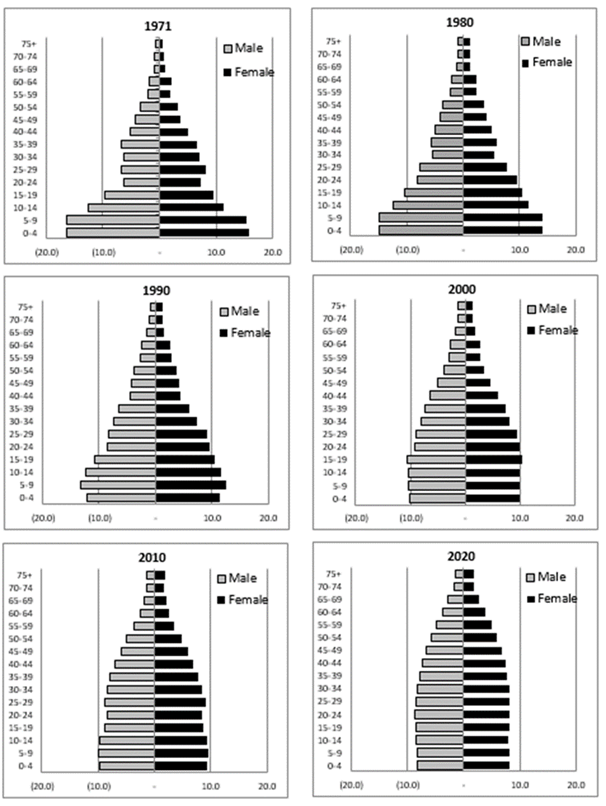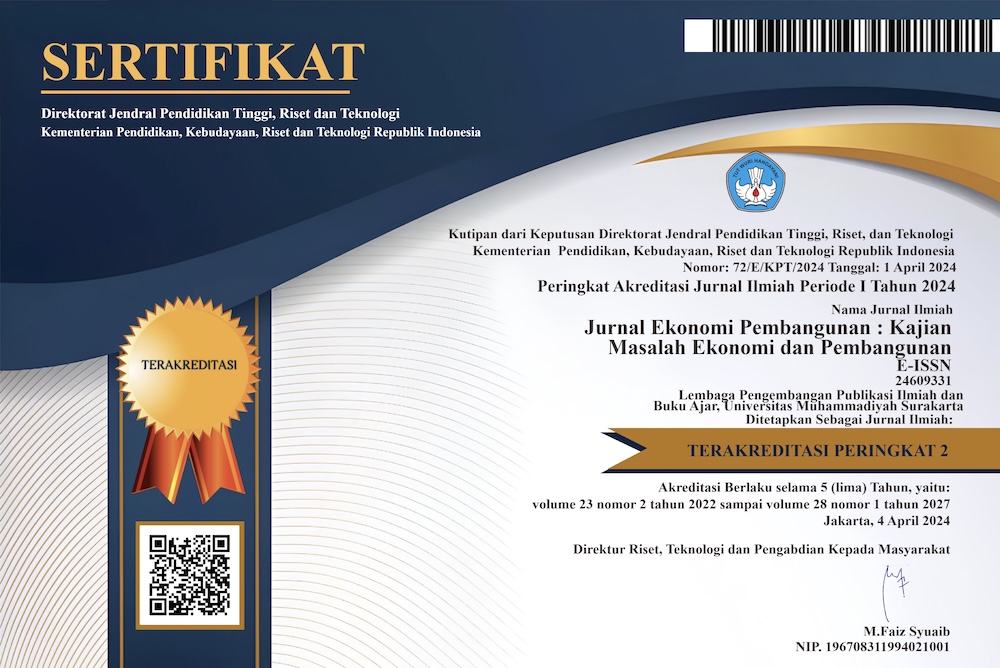Contribution of Demographic Factors to Indonesia’s Economic Growth
DOI:
https://doi.org/10.23917/jep.v25i2.23816Keywords:
demographic change, labor force, economic growthAbstract
Most empirical studies on the dynamics of Indonesia's economic growth predominantly adopt a Neoclassical framework. As the framework generally regards population growth as an impediment to economic growth, very few studies discuss the effect of demographic factors. Contributing to this limited literature, this study estimates the contribution of demographic factors to Indonesia’s economic growth. We employed a descriptive accounting framework to decompose the growth of GDP per capita into pure labor effect and productivity effect. The decomposition analysis shows that the contribution of demographic factors to GDP per capita growth generally declined during 1971–2020. From 1971 to 2000, the pure labor effect contributed more than the productivity effect. This was due to demographic transition and productivity enhancing labor reallocation. However, from 2000 to 2020, the pure labor effect's contribution fell below that of the productivity effect. The benefits of the growing dominance of working population been largely offset by reallocation of labor from high to low productivity sector and the decreasing rate in the labor force participation, leading to the decline in the relative contribution of pure labor effect.
Downloads

Submitted
Published
How to Cite
Issue
Section
License
Copyright (c) 2024 Alfa Farah, F.X. Sugiyanto

This work is licensed under a Creative Commons Attribution 4.0 International License.














